An Introduction to By Fire and Sword
By Glenn Van Meter
I think that what draws many of us, as gamers, to new systems is often the “coolness” or “flashiness” factor of seeing the miniatures on the table. Oftentimes, this can draw us in, even if we don’t know anything about a particular period of historical gaming, or even have a background in the scale or style of game we’re looking at. This, to an extent, is what caught my eye initially with By Fire and Sword, Produced by Wargamer out of Poland.
My first exposure to By Fire and Sword (BFAS) was seeing it on Kickstarter in 2013 as they were trying to “port” the game here into the United States. I had a small interest in the Polish forces of WWII, having collected a list for the 1st Polish Armored in Flames of War, and in part due to a small Polish branch of my family heritage, so I decided to take a look. And that’s when the absolute pageantry of the game blew me away.
The forces in BFAS are super colorful. The uniformed military formations had yet to come to much of eastern Europe, and even those units which did have uniforms tended to use bright colors. Many other units simply wore their fanciest clothes to battle, leading to formations of men dressed eclectically in a variety of bright colors and styles. Add to all of that the fact that every formation tends to have a number of flags and banners, and you find yourself with a very colorful battlefield.
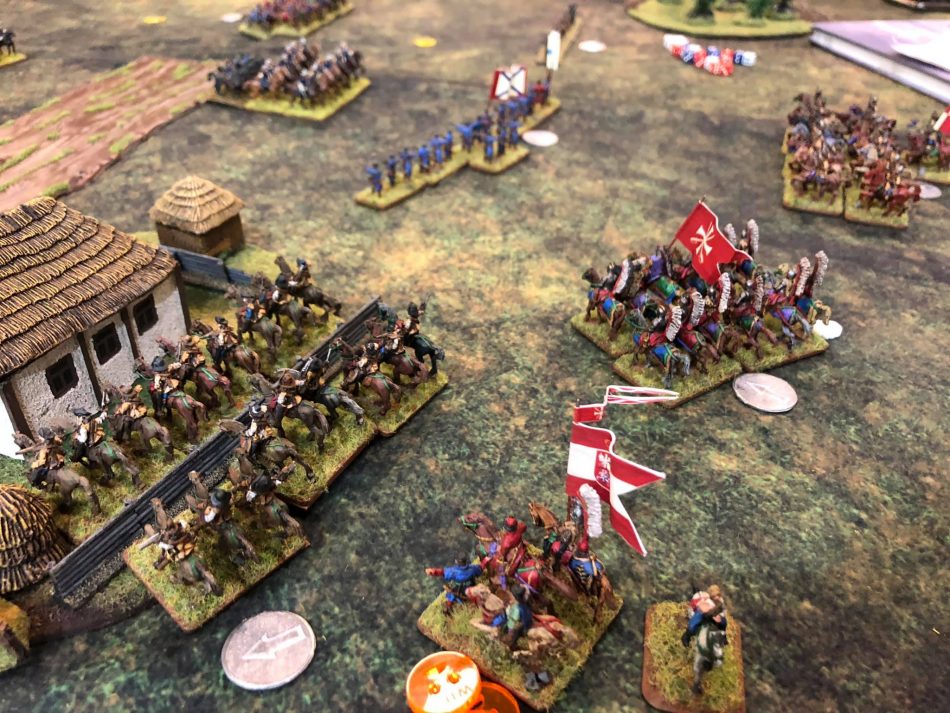
By Fire and Sword is fairly unique in three ways. First is that it focuses on 17th-century combat in eastern Europe. As wargamers, many of us are familiar with the sights of western armies of the time – giant pike and shot formations supported by some cavalry. However, the combat in eastern Europe was much more cavalry based, so most battles in BFAS feature entire lists of cavalry, where infantry and even dragoon units are often simply a small support role.
The second unique aspect is that the game is designed to be played at various levels (skirmish, task force, division, and potentially army), each of which provides different tactical and strategic choices and challenges for the player.
The third and final unique thing about this game is that it was originally written and played for years within a Polish-speaking audience – originally released in Poland in 2010. The rules were not released by Wargamer in English until they shipped the Kickstarter in 2015. This is a very different situation for most American players at the very least, and possibly most English-speaking wargamers in general, as we are very used to rules that are written in our language and then translated to other languages.
As can be expected, when new book releases come out there are occasional questions that can arise due to translation issues. This is not a problem, but just an aspect of the game of which to be mindful. It also means that everything is measured in centimeters.
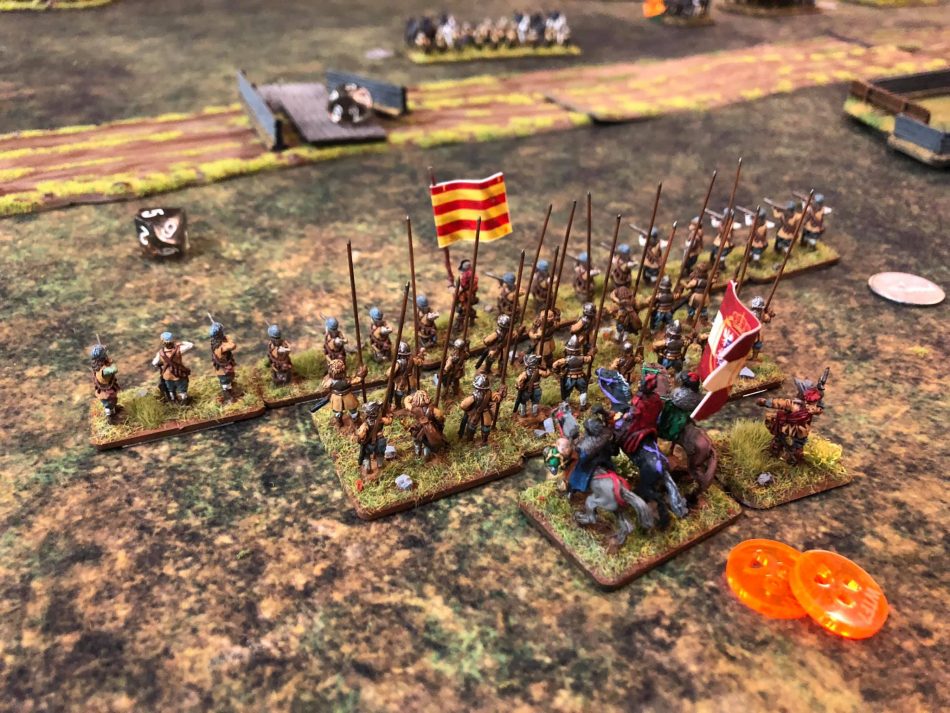
The best introduction to BFAS is at the skirmish level, as this is the level at which most players play encounters in friendly pickup games and in most tournaments, usually with a battle taking about two hours. The larger task force and division levels take an afternoon or more to play simply due to their size.
As a player coming from playing many more modern settings such as Flames of War, By Fire and Sword was a bit different. A key element of the game is the command and control system. Each skirmish list has a commander, usually a Colonel or equivalent, who has a certain number of command points which represent their tactical acumen and ability to control the units under their command.
Many lists allow players to take additional command figures such as Lieutenant Colonels and Majors as they build larger lists. These command points are then used to do many things on the battlefield, and victory will come through judicious use of command points.
The most basic use of command points is to issue orders to a commander’s units, which include maneuver, defend, and charge. Units start the game with a free order, but these can be changed at the beginning of each turn by nearby commanders, with order changes becoming more expensive the further away units are from the commander issuing the order. Command points can also be used to attempt to rally units, reorganize away casualty markers, modify unit morale, or even influence the roll for initiative.
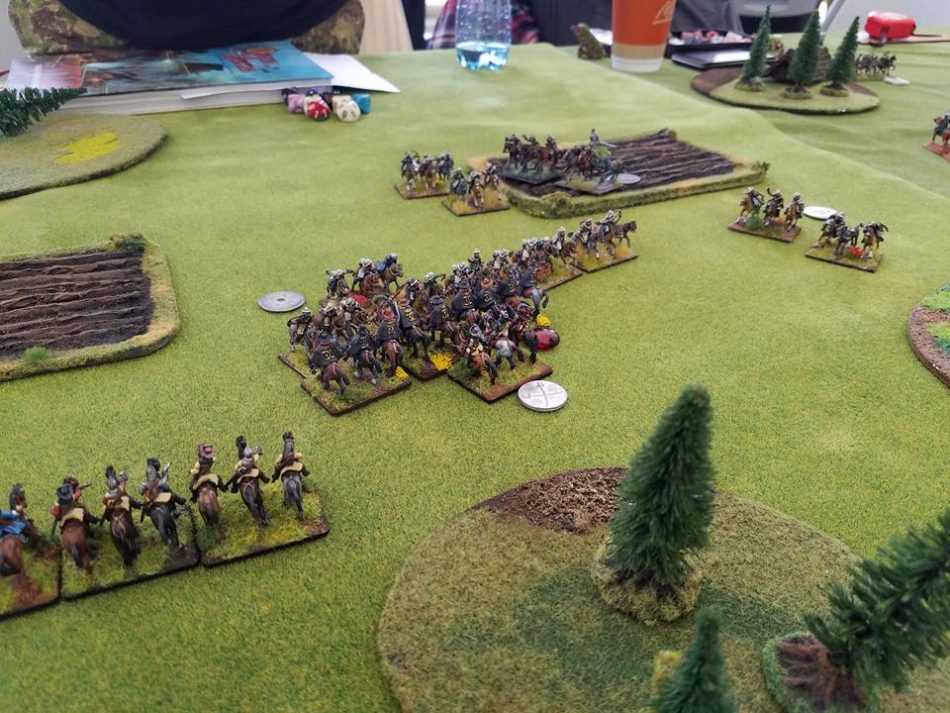
The turn starts with players rolling for initiative, with the winner deciding to go first or second in the turn. In the orders phase, each player, in turn, has their commanders issue orders to units, attempt to rally disorganized and fleeing troops, or attempt to reorganize nearby units to remove wound counters.
Once both players have issued orders, players take their turns in the maneuver phase, revealing new orders, declaring charges and charge reactions, and moving their units about the battlefield. Next comes the first of several phases of shooting: The Defenders Fire Phase, where any units with defend orders can fire their weapons, potentially driving off charging units. Then, charging units have a follow-up move to potentially make contact if they didn’t during the maneuver phase.
The first round of combat then occurs, and the losing unit will withdraw or flee, giving the winner a chance to pursue. In a draw, both sides will withdraw, so units never lock into combat for multi-round slugfests.
A second round of combat then occurs, where victorious charges keep pushing their defeated foes. This means that a battlefield can change rapidly in a single turn as some units are potentially able to travel 60 cm in certain circumstances, driving a fleeing enemy before them.
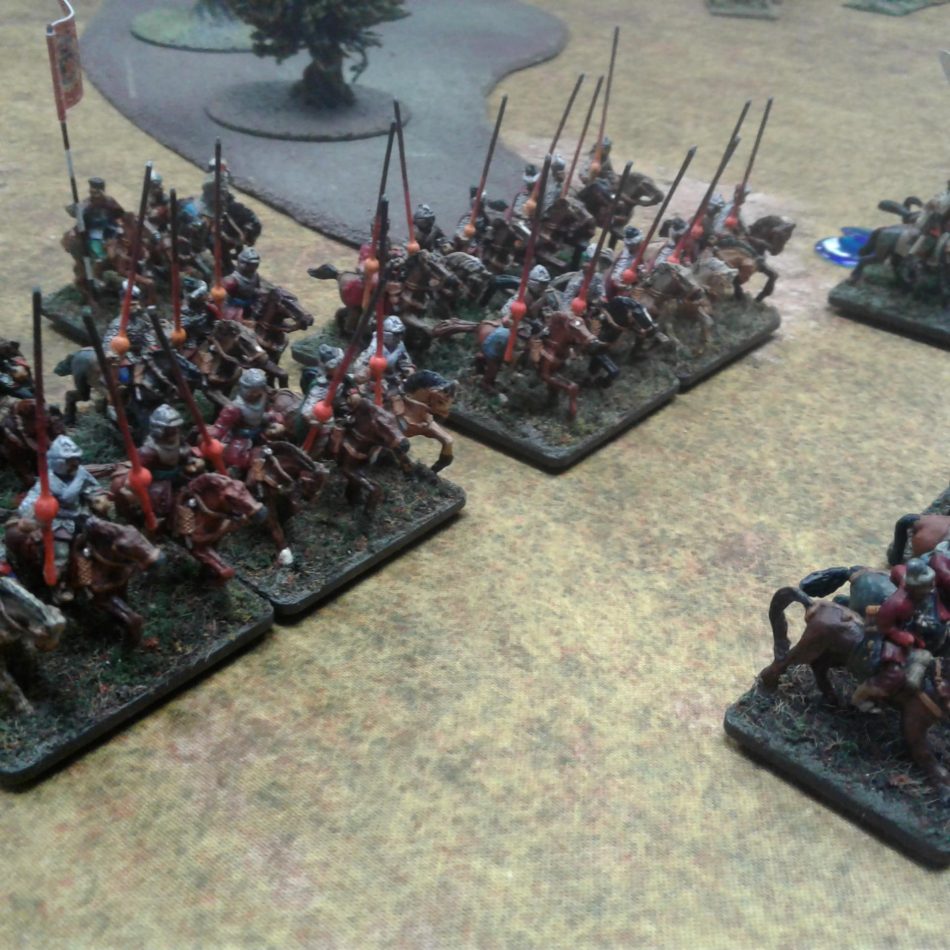
Unlike nearly all other games, BFAS supports unequal forces in combat with each other. In fact, putting too many forces into you list risks allowing the opponent access to powerful counterbalancing effects, including choosing the mission, the attacker and defender roles, delaying or disorganizing a portion of your force, giving your commander “a bad day”, or other negative effects.
Each force also has a reconnaissance value based upon national special rules and the units in a force, which is compared with their opponents at the beginning of a skirmish game. The force with the higher value can spend the difference on certain other effects granting advantages or disadvantages such as an initiative re-roll, or splitting an opponent’s squadrons into smaller units.

One of the big draws for players is the variety of forces available to players. I’ll start with the six nations that were in the original rulebook, and I will discuss the other nations entering the conflict as part of my next article focusing on the period known as The Deluge, which is also the title of Wargamer’s second major rulebook release for this system.
These descriptions again focus on the skirmish level. Most of these forces tend to be more focused on cavalry raids with little infantry, though there are some garrison lists that are quite the opposite. Infantry and cannon become more readily available to players as the game level increases to task force and division.
 The Polish-Lithuanian Commonwealth
The Polish-Lithuanian Commonwealth
As a Polish company, Wargamer has made the PLC – and the Winged Hussars specifically – the stars of this system, the home team, so-to-speak. Most of the conflicts covered thus far revolve around the interactions of the PLC with its neighboring powers in the mid to late 1600s. The commonwealth was very fractious politically, and so the armies are essentially split between the Polish and Lithuanian halves of the commonwealth.
Polish lists tend to center around elite cavalry formations, ranging from the more numerous Cossack-style cavalry to the armored Pancerni. The Lithuanian lists center around their Petyhorcy and levies of nobility, creating slightly more numerous lists than the Poles. The PLC also makes use of light cavalry from Wallachia and the Tartars to support their elite heavy-hitters on the flanks. Dragoons are often available to get musket armed infantry into the fight, but a unit of pure infantry are a rare sight.
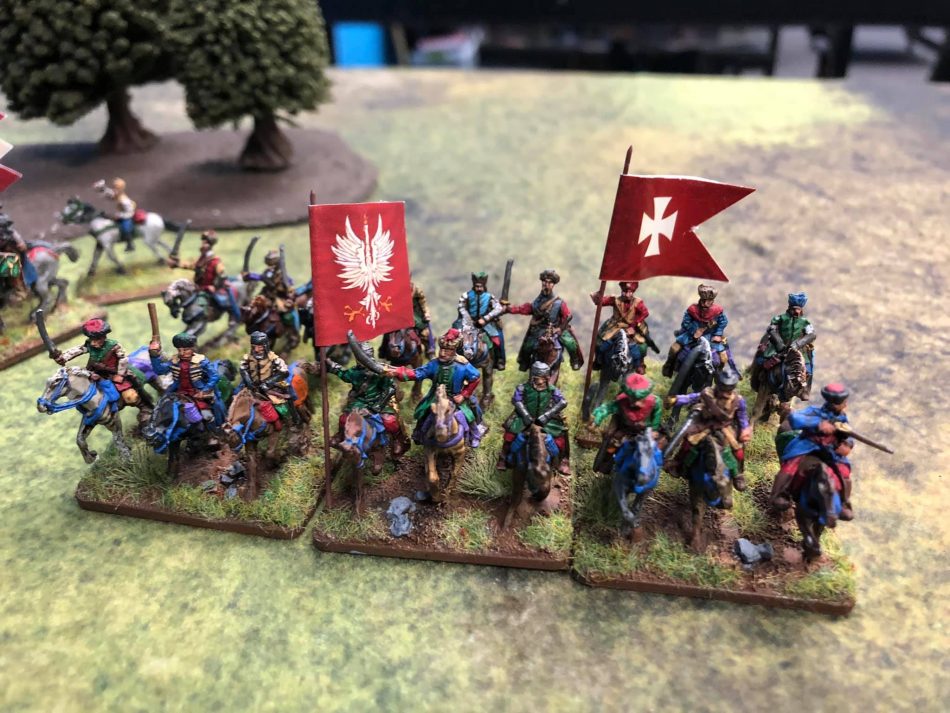 The Kingdom of Sweden
The Kingdom of Sweden
The main “bad guy” in the system due to the PLC favoritism, the Swedes are also the most “western-style” power in the initial game. They have access to well-trained cavalry and infantry with excellent command and control but run into the usual elite force problems of smaller numbers of troops. The mainstay of their forces are Reiter style cavalry, either national or mercenary, and they have access to more dragoons and infantry than the PLC, with several skirmish lists being 50% or more in the infantry.
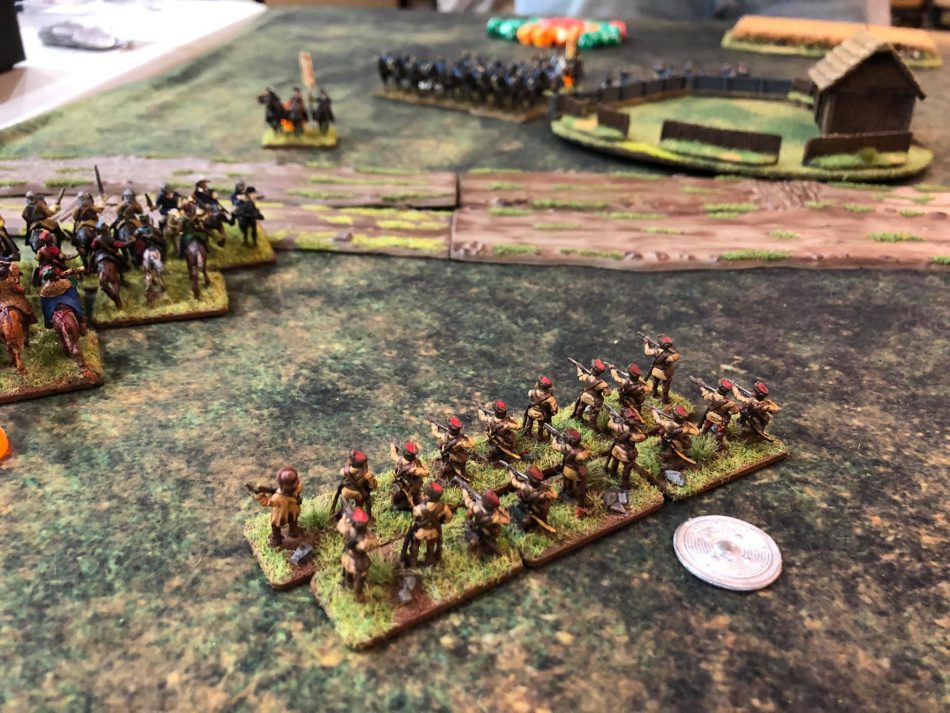 The Cossacks
The Cossacks
Cossacks are a very unique force in BFAS and one that surprised me a bit. When I hear of Cossacks, I think of the Russian mounted troops that helped to police the empire in the late 18th through the early 20th centuries, but these troops are a much different nature. They are still a people of the Russian steppes, but cavalry is relatively rare in this army.
The majority of the army is made up of mediocre infantry and peasant rabble backed up by large wagon trains which can mount small cannon on them and act as a mobile defensive works. They do have some small cavalry units in support, but these are more akin to fighting dragoons rather than true cavalry.
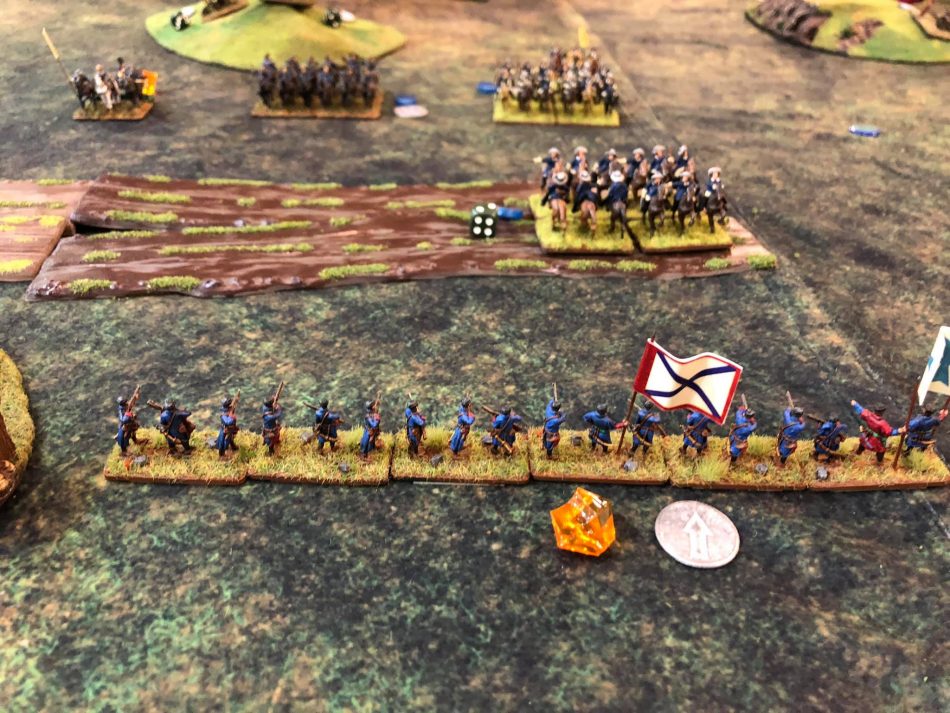 The Tartars or Crimean Khanate
The Tartars or Crimean Khanate
The Tartars (or Tatars, depending on your source) are probably closer to what most people think of when they think of the roaming horse peoples of the Russian steppes. This force uses a lot of light cavalry, making them highly mobile and tough to pin down for a fight. Their light cavalry is very good at maneuvering around flanks and harassing opponents from a distance with bow fire before hitting with opportunistic charges. These forces will almost always win reconnaissance and so will have many tricks to pull on whomever they’re facing.
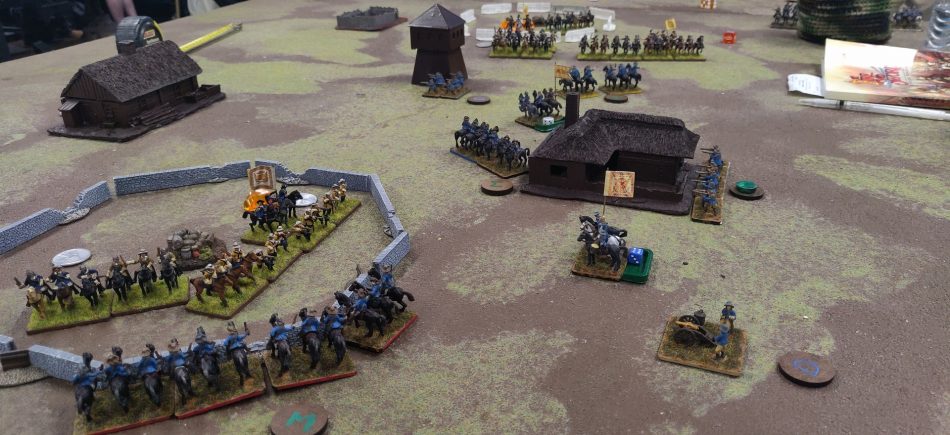 The Ottoman Empire
The Ottoman Empire
The Ottoman Empire forces are everything you could imagine them to be. They’re big, they’re grand, they fly tons of flags (if you want to model them), they’re brightly colored, and they’re all fairly low skill, meaning that they come in numbers.
They have very few units that could be described as the equal of the more Western-styled armies on a man for man basis, but their numbers often make up for this. They are a powerful offensive force when used correctly. Additionally, they have a variety of troop types at their disposal, ranging from infantry with cannon to lancers to light cavalry, meaning they can have a solution for every problem.
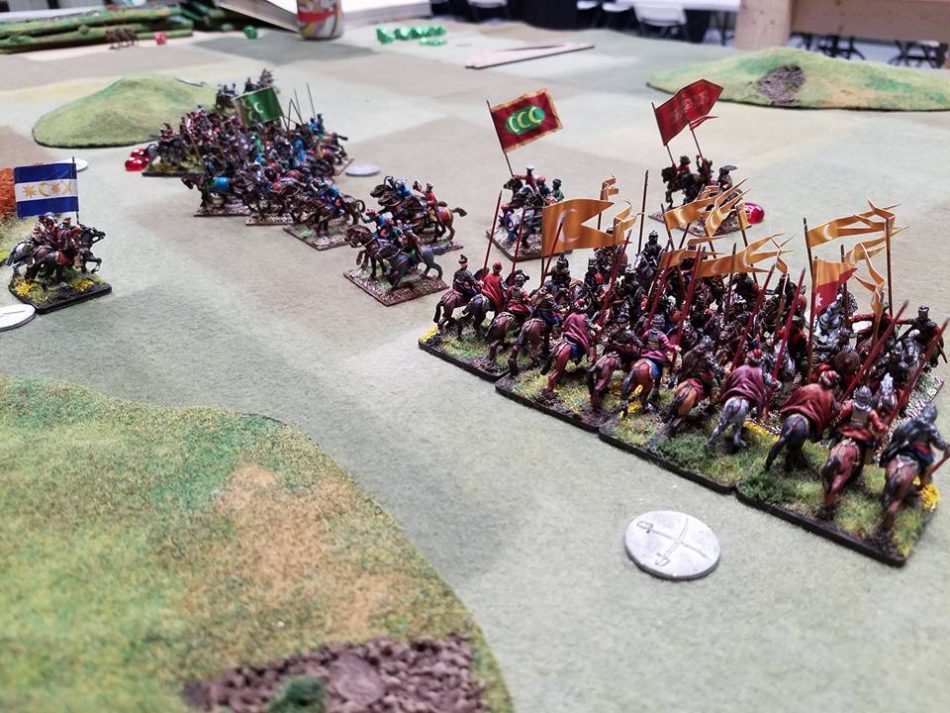 Tsardom of Muscovy
Tsardom of Muscovy
The Muscovites are the precursor faction to the Russian empire as we know it from the 18th century onwards. Their forces are somewhat typically Russian in that they have large quantities of mediocre forces, often attempting to emulate western forces, but just not quite there. They’re often led by mediocre commanders, giving them some command and control issues, but they can be stubborn on the defense and implacable in the attack when handled by an able commander. Again they have a wide range of units depending on the list you want to choose, but the variety within a list is often limited.
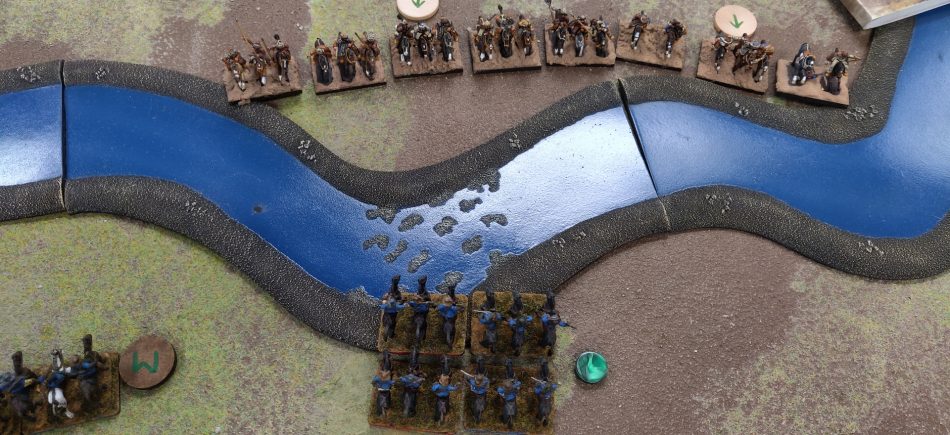 Resources
Resources
One of the plus-sides to By Fire and Sword is all the online resources available, even with a currently small community. The skirmish rulebook (The Player’s Edition) is available for free online. The skirmish and division force lists and descriptions about how individual troop types were organized and fought for each of the nations I listed above are also free online in a document called “Republic in Flames”.
Wargamer also maintains a free army creator that players can use to build forces and print lists. This resource doesn’t have all of the published lists, notably missing the lists from newer books, though they are slowly added over time. All of these resources are linked at the bottom of this article.
In addition, there are several Facebook groups that many players join, both to share after-action reports, painting progress pictures and the like, as well as to organize events and meet-ups for gaming opportunities. Just search for By Fire and Sword or BFAS.
Links for the game:
Various photo credits to Wargamer, Stephen ‘Kato” Lee, Brian Reid, and Karl Shanstrom
